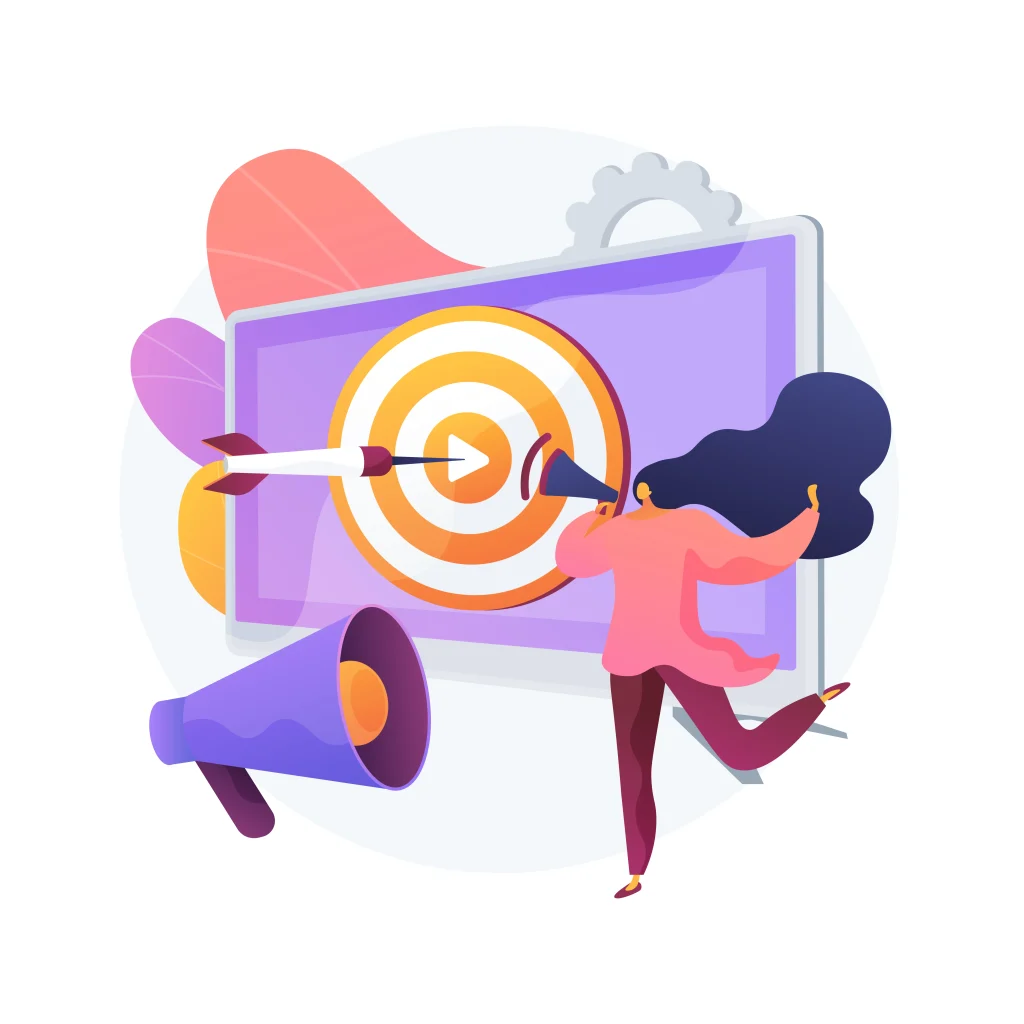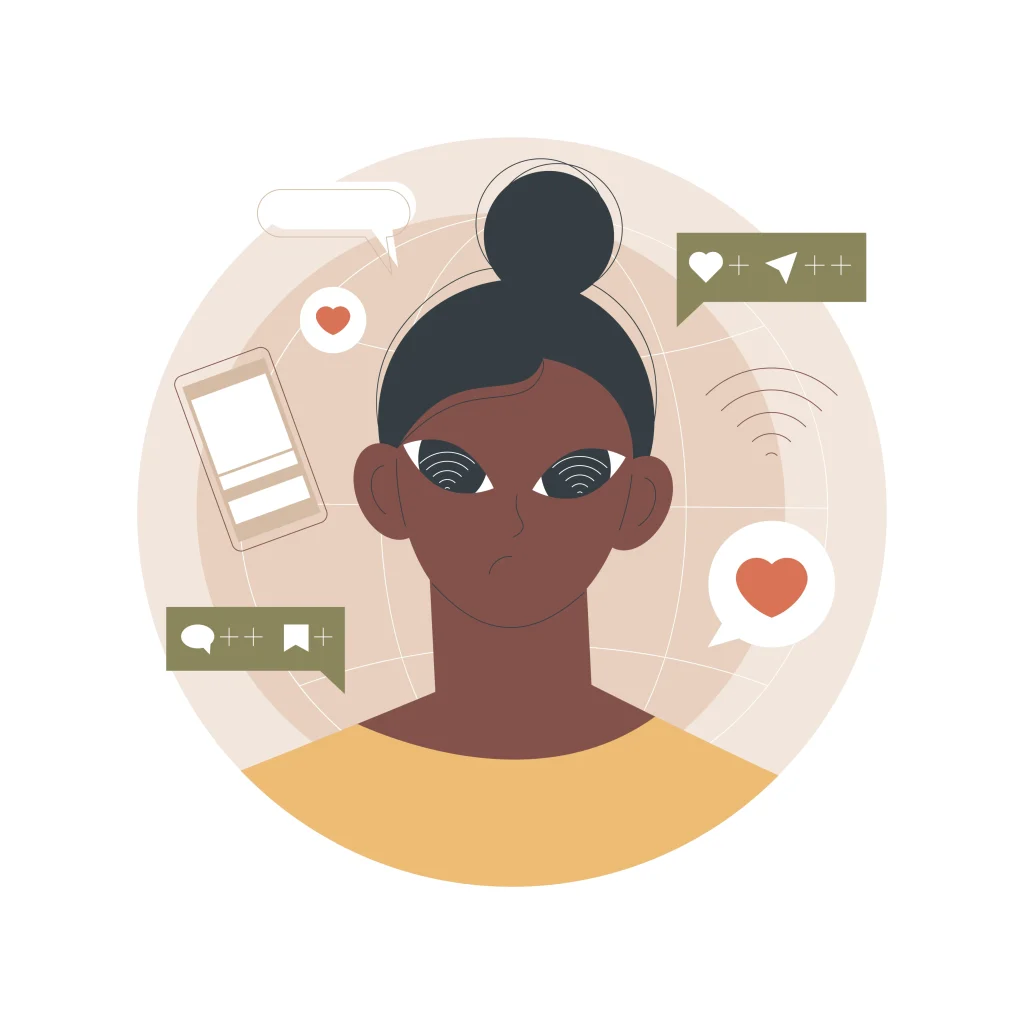Buyer personas are semi-fictional representations of your ideal customers based on market research and real data about your existing customers. They help businesses understand their target audience better, allowing for more personalised marketing strategies.
Buyer personas enable businesses to tailor their digital marketing efforts to specific customer segments, leading to higher engagement and conversions. By understanding the needs and preferences of different buyer personas, businesses can deliver more relevant content and solutions, resulting in better customer satisfaction.It also informs various aspects of digital marketing strategy, from content creation to advertising campaigns, guiding businesses in making data-driven decisions.
In this article, we’ll delve into the concept of buyer personas and explore how businesses can create and utilise them effectively in their digital marketing endeavours. We’ll discuss the process of researching and developing detailed buyer personas, as well as the benefits and challenges associated with their implementation. Additionally, we’ll provide practical tips, tools, and real-world examples to help businesses leverage buyer personas to enhance their digital marketing strategies and drive success.
What is a Buyer Persona?
Buyer personas serve as detailed representations of the ideal customers for a business, encapsulating their demographics, behaviours, motivations, and goals. These personas are not merely hypothetical constructs but are crafted through meticulous market research, analysis of customer data, and insights gleaned from existing clients.
The significance of buyer personas in business cannot be overstated. They enable companies to tailor their marketing strategies to resonate with specific customer segments, thereby enhancing engagement and increasing conversions. By understanding the unique needs and preferences of different buyer personas, businesses can also develop products or services that directly address specific pain points and desires, thereby boosting customer satisfaction and loyalty.
Buyer personas play a crucial role in guiding various strategies and tactics. For instance, they inform content creation efforts by guiding businesses to produce material that speaks directly to the interests and concerns of their ideal customers. This targeted approach not only fosters deeper engagement but also cultivates a sense of rapport and trust with the audience.
Moreover, they are instrumental in shaping personalised advertising campaigns. By segmenting audiences based on persona characteristics, businesses can deliver highly targeted ads that are more likely to resonate with specific customer groups. This not only maximises the effectiveness of advertising spend but also enhances the overall customer experience by delivering relevant and timely messaging.
Furthermore, buyer personas influence decisions related to website design and user experience, ensuring that the online journey aligns with the preferences and behaviours of the target audience. By optimising the user experience to cater to the needs of different personas, businesses can create a more seamless and intuitive digital environment that fosters engagement and drives conversions.
Researching Your Target Audience

Before crafting effective buyer personas, thorough research into your target audience is essential. This process involves gathering and analysing data from various sources to gain insights into the demographics, preferences, behaviours, and pain points of your ideal customers.
Start by leveraging existing customer data, such as demographics, purchase history, and engagement metrics. Analyse this information to identify common traits and patterns among your customer base, helping to segment them into distinct personas.
Conduct external research to fill in any gaps and validate your findings. This may involve surveys, interviews, focus groups, or social media listening to gather feedback directly from your target audience. By engaging with customers and prospects, you can uncover valuable insights into their needs, challenges, and preferences.
Furthermore, explore industry reports, market research studies, and competitor analysis to gain a broader understanding of market trends and dynamics. Identify emerging trends, consumer preferences, and competitive positioning to refine your buyer personas and ensure they remain relevant and effective.
When researching your target audience, aim to uncover not only demographic information but also psychographic factors such as values, attitudes, and lifestyle choices. Understanding the motivations and aspirations driving consumer behaviour enables you to create more nuanced and accurate buyer personas that resonate deeply with your audience.
Creating Detailed Buyer Personas

Compile Research Findings
Consolidate the insights gathered from your research into a comprehensive dataset. Organise demographic, psychographic, and behavioural data to identify commonalities and trends among your target audience segments.
Segment Your Audience
Based on the research findings, segment your audience into distinct groups that share similar characteristics and behaviours. These segments will form the basis for creating individual buyer personas.
Develop Persona Profiles
For each audience segment, create a detailed persona profile that represents a fictional character embodying the traits and attributes of that segment. Include demographic details, such as age, gender, occupation, and income, as well as psychographic information like values, interests, challenges, and goals.
Personalise Each Persona
Give each persona a name and personalise their profile with specific details and anecdotes gleaned from your research. Provide context by describing their typical day, habits, preferences, and pain points, making the persona feel more human and relatable.
Prioritise Key Attributes
Identify the most significant attributes and characteristics of each persona, focusing on those that have the greatest impact on their purchasing decisions and interactions with your brand.
Include Relevant Insights
Incorporate insights and quotes from customer interviews, surveys, or social media interactions to add depth and authenticity to your personas. Use real-life anecdotes and verbatim quotes to illustrate key points and highlight common themes.
Validate with Stakeholders
Share the persona profiles with relevant stakeholders, such as marketing teams, sales representatives, and product managers, to gather feedback and ensure alignment. Validate the accuracy and relevance of the personas to ensure they effectively represent your target audience.
Iterate and Refine
Continuously refine and iterate on your personas based on ongoing feedback, new data, and evolving market trends. Regularly revisit and update persona profiles to reflect changes in customer behaviour, preferences, and demographics.
Document and Distribute
Once finalised, document your buyer personas in a format that is easily accessible and shareable across the organisation. Consider creating persona cards, posters, or digital documents that summarise key details and insights for quick reference.
Integrate into Marketing Strategies
Incorporate your buyer personas into all aspects of your marketing strategy, from content creation and messaging to campaign targeting and customer segmentation. Use the personas to guide decision-making and ensure your marketing efforts are tailored to the needs and preferences of your target audience.
Examples of Buyer Personas
Sarah the Small Business Owner
- Demographics: Female, aged 35-45, owns a small boutique in a suburban area.
- Psychographics: Values quality and uniqueness, enjoys supporting local businesses, active on social media.
- Challenges: Limited marketing budget, struggles to stand out among larger competitors.
- Goals: Increase foot traffic to her store, build brand loyalty among customers.
- Preferred Channels: Instagram, local community events, word-of-mouth referrals.
- Quote: “I’m passionate about my business and want to create a memorable experience for my customers, but I need cost-effective marketing solutions.”
David the Digital Nomad
- Demographics: Male, aged 25-35, works remotely as a freelance graphic designer.
- Psychographics: Values flexibility and freedom, seeks inspiration from travel and adventure, tech-savvy.
- Challenges: Balancing work-life integration, staying motivated while working independently.
- Goals: Expand his client base, establish himself as an authority in his niche.
- Preferred Channels: LinkedIn, design forums and communities, online portfolio platforms.
- Quote: “As a freelancer, I’m always looking for ways to showcase my skills and connect with potential clients. Building a strong online presence is essential for my career.”
Emily the Eco-conscious Millennial
- Demographics: Female, aged 25-30, lives in an urban area, works in a creative industry.
- Psychographics: Values sustainability and ethical consumption, actively supports eco-friendly brands, engages in social activism.
- Challenges: Finding affordable sustainable products, navigating greenwashing in the market.
- Goals: Make environmentally conscious purchasing decisions, advocate for positive social change.
- Preferred Channels: Instagram, eco-conscious blogs and websites, sustainable lifestyle communities.
- Quote: “I believe in the power of voting with my wallet. Supporting brands that align with my values is important to me, but it’s not always easy to find trustworthy options in a sea of greenwashing.”
Michael the Tech Enthusiast
- Demographics: Male, aged 30-40, employed in a technology-related field, resides in an urban area.
- Psychographics: Passionate about gadgets and innovation, stays updated on the latest tech trends, values efficiency and convenience.
- Challenges: Sorting through overwhelming amounts of information online, ensuring he invests in high-quality products.
- Goals: Stay ahead of the curve with cutting-edge technology, optimize his workflow with tech solutions.
- Preferred Channels: Tech forums, YouTube tech reviews, industry newsletters.
- Quote: “In my line of work, staying up-to-date with the latest tech advancements is crucial. I rely on trusted sources to help me navigate through the noise and make informed decisions.”
Sophie the Stay-at-Home Parent
- Demographics: Female, aged 30-40, primary caregiver for young children, resides in a suburban or rural area.
- Psychographics: Values family time and work-life balance, seeks convenience and simplicity in daily tasks, relies on online resources for parenting tips and advice.
- Challenges: Juggling household responsibilities while caring for children, managing stress and overwhelm.
- Goals: Find efficient solutions to simplify household tasks, discover educational and entertaining content for children.
- Preferred Channels: Parenting blogs, online parenting communities, social media groups for moms.
- Quote: “As a busy parent, I’m always on the lookout for products and resources that make my life easier. I appreciate recommendations from fellow parents who understand the challenges I face.”
Validating Buyer Personas
Once you’ve crafted your buyer personas, it’s essential to validate them to ensure they accurately represent your target audience. Validation involves gathering feedback and data from various sources to confirm that your assumptions align with reality. Here are some effective strategies for validating your buyer personas:
- Surveys and Interviews: Conduct surveys or one-on-one interviews with your existing customers and leads. Ask them questions about their demographics, preferences, pain points, and buying behaviors. Their responses can provide valuable insights into whether your personas accurately reflect your audience.
- Analytics and Website Data: Analyze your website and social media analytics to understand visitor demographics, browsing behavior, and engagement patterns. Look for trends or patterns that align with the characteristics outlined in your buyer personas. For example, if your personas include tech-savvy individuals, you should see higher engagement with technology-related content on your website.
- Sales and Customer Service Feedback: Consult with your sales and customer service teams to gather feedback on customer interactions. They can provide valuable anecdotes and observations about the types of customers they encounter, their needs, and pain points. This qualitative data can help validate or refine your personas.
- Market Research: Stay informed about industry trends, market research reports, and competitor analysis. Look for corroborating evidence that supports the assumptions made in your buyer personas. If your personas target young professionals, for instance, industry reports indicating a growing trend of remote work among this demographic can validate your assumptions.
- A/B Testing: Experiment with different marketing messages, content formats, or offers targeted at specific buyer persona segments. Measure the performance of each variant using A/B testing and analyze the results to see which resonates best with your target audience. This data-driven approach can provide valuable insights into whether your personas accurately reflect your audience’s preferences and behaviors.
Implementing Buyer Personas in Digital Marketing

Once you’ve developed and validated your buyer personas, it’s time to put them to work in your digital marketing strategies. Here’s how you can effectively leverage buyer personas to enhance your marketing efforts:
Tailored Content Creation
Use your buyer personas as a guide to create targeted and relevant content that resonates with each segment of your audience. Understand their pain points, preferences, and interests, and develop content that addresses their specific needs at each stage of the buyer’s journey. For example, if one of your personas is a busy parent looking for time-saving solutions, create content that offers tips and hacks to simplify their daily routine.
Personalized Messaging
Craft personalised marketing messages and communication strategies tailored to each buyer persona. Use language, tone, and imagery that appeals to their unique characteristics and motivations. Personalisation can significantly improve engagement and conversion rates by making your audience feel understood and valued.
Segmented Email Campaigns
Segment your email marketing campaigns based on your buyer personas to deliver targeted messages that are relevant to each audience segment. Use dynamic content and personalised subject lines to capture the attention of different personas and drive higher open and click-through rates. For instance, if you have personas for budget-conscious shoppers and luxury enthusiasts, tailor your email content and promotions accordingly.
Customised Ad Targeting
Utilise the insights from your buyer personas to create custom audience segments for your digital advertising campaigns. Leverage demographic, behavioural, and interest-based targeting options on platforms like Google Ads and Facebook Ads to reach specific personas with relevant ads. By showing ads that speak directly to their needs and interests, you can increase ad engagement and conversion rates.
Optimised Landing Pages
Design landing pages that are optimised for each buyer persona, offering tailored messaging and content that aligns with their needs and preferences. Use A/B testing to experiment with different variations of landing pages targeted at different personas and measure their performance to identify the most effective approaches.
Social Media Engagement
Engage with your audience on social media platforms using insights from your buyer personas to guide your interactions. Share content that resonates with each persona, participate in relevant conversations, and respond to comments and inquiries in a personalised manner. Building authentic relationships with your audience can strengthen brand loyalty and drive customer retention.
Common Mistakes to Avoid
While developing and implementing buyer personas can significantly enhance your digital marketing efforts, it’s essential to be aware of common pitfalls that can undermine their effectiveness. Here are some mistakes to avoid:
Assuming One Size Fits All
One of the most common mistakes is creating generic buyer personas that don’t accurately represent your target audience segments. Avoid the temptation to lump all your customers into broad categories and instead strive to create detailed and nuanced personas that capture the diversity of your audience.
Neglecting Research
Rushing through the research phase or relying on assumptions can lead to inaccurate buyer personas. Ensure you conduct thorough research, including surveys, interviews, and data analysis, to gather insights directly from your audience. Without reliable data, your personas may not accurately reflect your customers’ needs and preferences.
Ignoring Feedback and Updates
Buyer personas should evolve over time to reflect changes in your audience and market dynamics. Failing to update your personas regularly or ignoring feedback from customers can result in outdated and ineffective marketing strategies. Stay agile and responsive to changes in consumer behaviour and market trends to keep your personas relevant.
Overcomplicating Personas
While detailed personas can be valuable, avoid overcomplicating them with unnecessary details or assumptions. Focus on capturing essential information that directly impacts your marketing strategies, such as demographics, pain points, goals, and purchasing behaviour. Keep your personas concise and actionable to ensure they remain useful tools for your marketing efforts.
Ignoring Negative Personas
In addition to identifying your target audience, it’s essential to recognise who your products or services are not suitable for. Refraining from developing negative personas, which outline characteristics of individuals who are unlikely to convert or engage with your brand, can lead to wasted resources and ineffective targeting.
Failing to Align with Marketing Strategies
Your buyer personas should serve as the foundation for all your marketing activities. Ensure there is alignment between your personas and your content creation, advertising, email marketing, and other strategies. Each piece of marketing collateral should be tailored to resonate with specific personas and address their unique needs and pain points.
Tools and Resources for Creating Buyer Personas
Building accurate and detailed buyer personas requires a combination of research, analysis, and creativity. Fortunately, several tools and resources are available to assist you in this process. Here are some essential tools and resources for creating effective buyer personas:
Survey and Questionnaire Tools
Platforms like SurveyMonkey, Typeform, and Google Forms enable you to design and distribute surveys to collect valuable insights from your target audience. Use these tools to gather demographic information, preferences, pain points, and buying behaviours directly from your customers.
Customer Relationship Management (CRM) Software
CRM systems such as HubSpot, Salesforce, and Zoho CRM can help you centralise customer data and track interactions across multiple channels. Utilise CRM features to segment your audience, identify trends, and uncover opportunities for persona development.
Analytics Platforms
Tools like Google Analytics, Adobe Analytics, and Hotjar provide valuable data on website visitors’ behaviour, including page views, bounce rates, and time on site. Analyse this data to understand how different audience segments interact with your website and identify patterns that inform persona creation.
Social Media Insights
Social media platforms like Facebook, Twitter, and LinkedIn offer robust analytics tools that provide valuable demographic and engagement data about your followers. Use these insights to understand the demographics, interests, and preferences of your social media audience and tailor your personas accordingly.
Market Research Reports
Access industry reports, market studies, and consumer surveys from reputable sources such as Nielsen, Forrester, and Statista to gain broader insights into market trends, consumer behaviour, and competitive landscapes. Incorporate relevant data and statistics into your persona profiles to enhance their accuracy and credibility.
Persona Templates and Guides
Many marketing software providers, industry organisations, and marketing blogs offer free persona templates and guides to help you structure and create your personas effectively. These resources typically include prompts, examples, and best practices for crafting detailed and actionable personas.
Customer Interviews and Focus Groups
Conduct one-on-one interviews, focus groups, or customer feedback sessions to gather qualitative insights directly from your target audience. Engage with customers in meaningful conversations to uncover their motivations, pain points, goals, and purchasing behaviour, which can enrich your persona development process.
Persona Development Workshops
Host workshops or brainstorming sessions with cross-functional teams to collaboratively develop buyer personas. Encourage participation from sales, marketing, customer service, and product development teams to ensure diverse perspectives and holistic persona profiles.
Tools and Resources for Creating Buyer Personas
Building accurate and detailed buyer personas requires a combination of research, analysis, and creativity. Fortunately, several tools and resources are available to assist you in this process. Here are some essential tools and resources for creating effective buyer personas:
- Survey and Questionnaire Tools: Platforms like SurveyMonkey, Typeform, and Google Forms enable you to design and distribute surveys to collect valuable insights from your target audience. Use these tools to gather demographic information, preferences, pain points, and buying behaviours directly from your customers
- Customer Relationship Management (CRM) Software: CRM systems such as HubSpot, Salesforce, and Zoho CRM can help you centralise customer data and track interactions across multiple channels. Utilise CRM features to segment your audience, identify trends, and uncover opportunities for persona development.
- Analytics Platforms: Tools like Google Analytics, Adobe Analytics, and Hotjar provide valuable data on website visitors’ behaviour, including page views, bounce rates, and time on site. Analyse this data to understand how different audience segments interact with your website and identify patterns that inform persona creation.
- Social Media Insights: Social media platforms like Facebook, Twitter, and LinkedIn offer robust analytics tools that provide valuable demographic and engagement data about your followers. Use these insights to understand the demographics, interests, and preferences of your social media audience and tailor your personas accordingly.
- Market Research Reports: Access industry reports, market studies, and consumer surveys from reputable sources such as Nielsen, Forrester, and Statista to gain broader insights into market trends, consumer behaviour, and competitive landscapes. Incorporate relevant data and statistics into your persona profiles to enhance their accuracy and credibility.
- Persona Templates and Guides: Many marketing software providers, industry organisations, and marketing blogs offer free persona templates and guides to help you structure and create your personas effectively. These resources typically include prompts, examples, and best practices for crafting detailed and actionable personas.
- Customer Interviews and Focus Groups: Conduct one-on-one interviews, focus groups, or customer feedback sessions to gather qualitative insights directly from your target audience. Engage with customers in meaningful conversations to uncover their motivations, pain points, goals, and purchasing behaviour, which can enrich your persona development process.
- Persona Development Workshops: Host workshops or brainstorming sessions with cross-functional teams to collaboratively develop buyer personas. Encourage participation from sales, marketing, customer service, and product development teams to ensure diverse perspectives and holistic persona profiles.
Creating buyer personas is a crucial step in developing effective digital marketing strategies that resonate with your target audience. By understanding the needs, preferences, and behaviours of your ideal customers, you can tailor your marketing efforts to deliver more relevant and personalised experiences.
As you embark on your journey to develop buyer personas for your business, remember to remain diligent, flexible, and customer-focused. Continuously refine and update your personas based on new insights and feedback to ensure they remain relevant and impactful.
If you need assistance with creating or refining your buyer personas, our team of digital marketing experts is here to help. Contact us today to discuss how we can support your business’s digital marketing needs and drive growth through strategic persona development.



